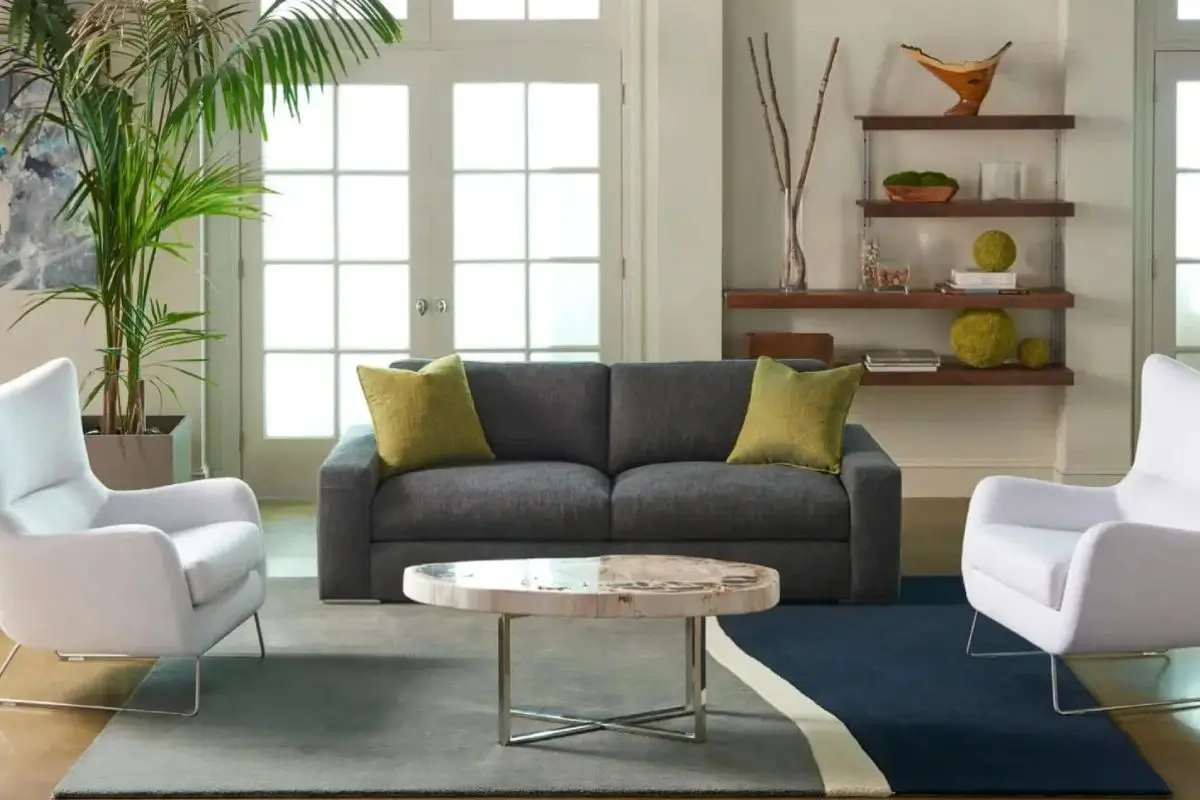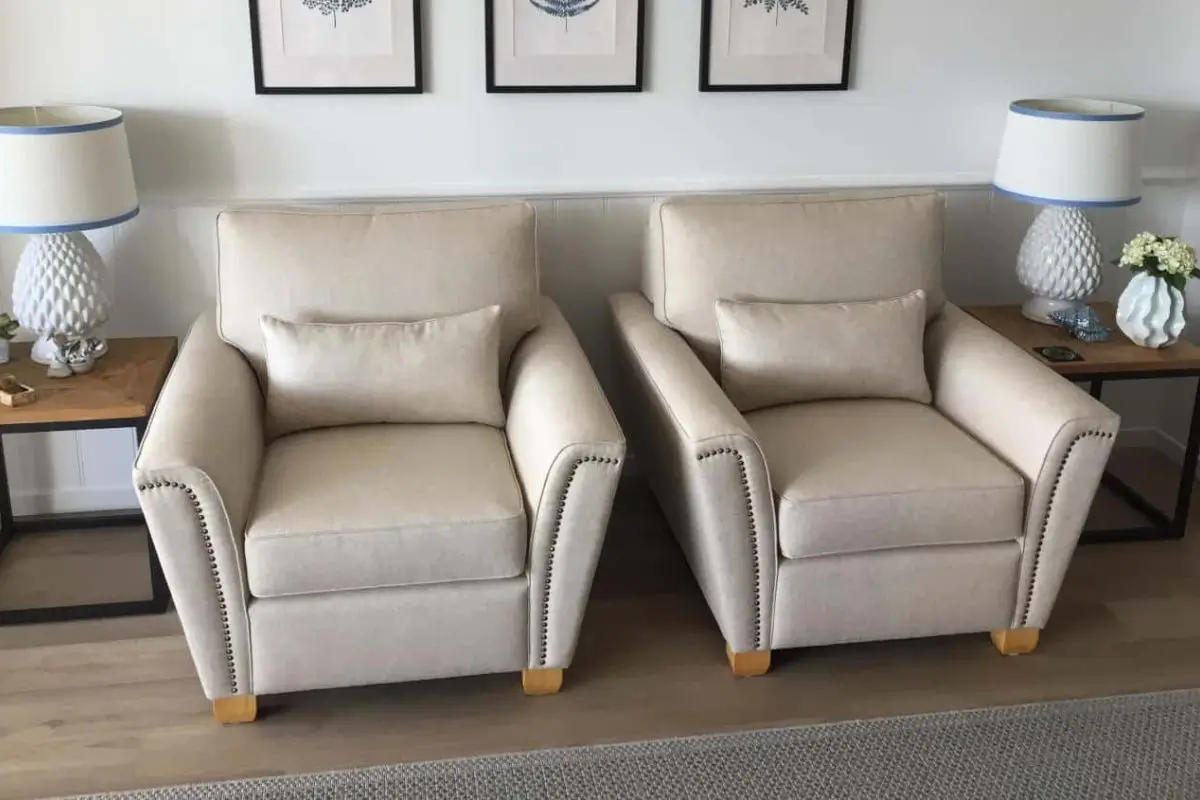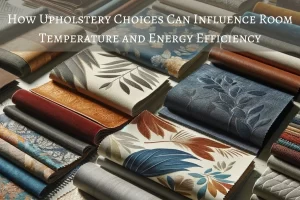Choosing the right upholstery is crucial for the comfort, style, and longevity of your furniture. The upholstery you select affects not only how your furniture looks but also how it functions within your home. Different fabrics offer varying levels of durability, maintenance, and aesthetic appeal, making it essential to choose wisely based on your lifestyle and environment. This guide will walk you through key factors to consider when selecting upholstery, helping you make a practical and stylish choice that aligns with your needs and personal preferences.
Durability Matters: Choosing Fabrics That Last
When selecting upholstery, durability is a critical factor, especially for high-traffic areas. Fabrics are rated for their abrasion resistance using tests like Wyzenbeek or Martindale rub tests, which measure how well the material withstands wear and tear. For living rooms or family spaces, you’ll want to choose fabrics with higher durability ratings, like leather, microfiber, or tightly woven synthetics. In contrast, formal areas that see less use might allow for more delicate fabrics like velvet or silk. Choosing the right durability ensures that your upholstery can handle daily use without showing signs of wear prematurely.
Lifestyle Considerations: Matching Upholstery to Your Daily Needs
Your upholstery choice should reflect your lifestyle. For homes with pets, fabrics like leather or microfiber are ideal as they resist scratches, pet hair, and stains. If you have young children, opt for materials with stain-resistant treatments or easy-to-clean synthetics. Families prone to spills will benefit from performance fabrics that repel liquids and are easily spot-cleaned. For households where aesthetics are prioritized over durability, more delicate fabrics may be suitable. By aligning your upholstery with your lifestyle, you ensure that your furniture remains functional, easy to maintain, and durable in your living environment.
Fabric Types and Textures: Find the Perfect Fit for Your Home
The type and texture of fabric you choose play a vital role in both comfort and style. Natural fabrics like cotton, linen, and wool offer breathability and a soft touch, making them ideal for cozy, relaxed settings. On the other hand, synthetic fabrics like polyester or nylon are known for their durability and resistance to fading or stains, perfect for high-traffic areas. The texture also matters—smooth fabrics lend themselves to modern, minimalist designs, while textured materials, like tweed or boucle, create warmth and add depth, ideal for traditional or rustic interiors.
Color and Patterns: Elevate Your Space with the Right Choices
Color and pattern are essential in defining the visual appeal of your furniture and overall space. Darker colors like navy or charcoal are practical for busy households, as they tend to hide stains and dirt better than lighter shades. In contrast, lighter colors like beige or cream can open up small spaces and make a room feel more airy. Patterns, whether geometric or floral, are great for adding personality and can help disguise wear and tear over time. Choosing the right color or pattern will impact the room’s mood and how well the furniture integrates with your décor.
Easy Maintenance: Upholstery Fabrics for Effortless Care
Maintenance should always be a consideration when choosing upholstery. Fabrics such as microfiber, treated cotton, or leather are low-maintenance, making them suitable for homes with children or pets. They resist stains, and most can be wiped clean or spot-cleaned with ease. Other fabrics, such as silk or untreated linen, require more delicate care and are prone to staining or wrinkling. It’s important to understand how much time and effort you’re willing to invest in keeping your upholstery clean and well-maintained, as this will impact the longevity and appearance of your furniture over time.
Climate Compatibility: Selecting Fabrics for Your Environment
The climate in which you live should influence your upholstery choice. For warmer environments, lightweight and breathable fabrics such as cotton or linen are ideal, as they keep seating areas cool and comfortable. In colder climates, heavier fabrics like wool or velvet not only provide warmth but also give the room a cozy, luxurious feel. Moisture-resistant materials are also important for humid climates, where fabrics like microfiber or synthetic blends will resist mildew and mold. Matching your upholstery to the climate will ensure year-round comfort and prevent damage to your furniture.
Budget-Friendly Upholstery: Striking a Balance Between Cost and Quality
Upholstery is an investment, but it’s essential to stay within your budget while ensuring quality. High-end fabrics like leather, wool, or custom-printed designs can be expensive, but they offer excellent durability and style. If you’re working with a smaller budget, consider mid-range options like polyester blends or performance fabrics that provide longevity and stain resistance at a lower cost. Prioritize investing in durable upholstery for frequently used pieces like sofas, while saving on decorative items like throw pillows or accent chairs. A balanced approach ensures you get value for money without sacrificing quality or aesthetics.
Allergy-Friendly Upholstery: Creating a Healthier Home Environment
If you or someone in your household has allergies, consider hypoallergenic upholstery fabrics. Tightly woven materials, such as leather, microfiber, or tightly woven cotton, minimize the accumulation of dust, pet dander, and allergens. Leather is particularly beneficial as it doesn’t trap dust and is easy to wipe down. Natural fibers like wool can sometimes trigger allergies, so it’s best to avoid them. Choosing hypoallergenic fabrics will improve indoor air quality and create a healthier living environment, especially for those with respiratory sensitivities or allergies to common household allergens.
Eco-Friendly Fabrics: Sustainable Choices for Your Furniture
Sustainability is a growing concern in home design, and eco-friendly upholstery options are now widely available. Organic fabrics like cotton, linen, and hemp, grown without pesticides, are excellent choices for environmentally-conscious consumers. Recycled materials, such as polyester made from post-consumer plastics, are another option. When purchasing eco-friendly upholstery, look for certifications like OEKO-TEX or Global Organic Textile Standard (GOTS) to ensure that the fabric meets environmental and ethical standards. Choosing sustainable fabrics not only benefits the environment but also offers healthier, non-toxic living spaces for you and your family.
Aligning Upholstery with Your Interior Design Style
To maintain a cohesive design, it’s essential to match your upholstery with your existing interior style. For modern interiors, opt for sleek, minimalist fabrics like smooth cotton or leather in neutral tones. Traditional or classic designs benefit from rich textures like velvet or jacquard in deep, warm colors. If your space leans towards a rustic or farmhouse aesthetic, linen or woven fabrics in earthy tones will blend seamlessly. By aligning the fabric choice with your interior design, you ensure that your upholstery enhances the room’s overall aesthetic, adding both style and functionality.
Conclusion
Choosing the right upholstery is a thoughtful process that requires balancing style, durability, and practicality. By considering factors like fabric type, durability, color, maintenance, and budget, you can select upholstery that not only complements your home’s décor but also meets your everyday needs. Making informed choices ensures that your furniture remains both beautiful and functional for years to come.






